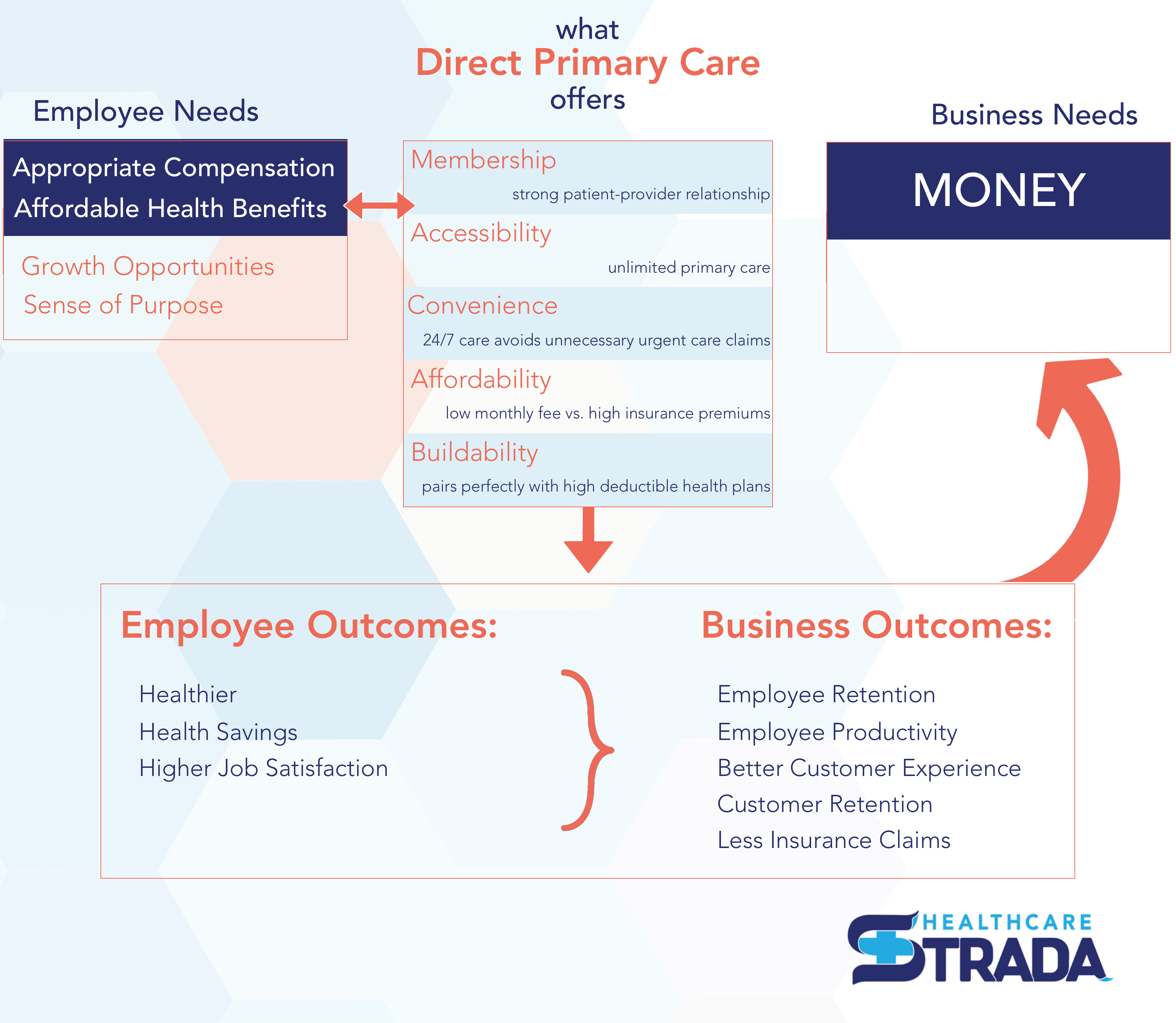NE State Employees Now Have More Primary Care Options
Primary Care Options Expand for NE State Employees
Via Lincoln Journal Star
Lincoln, NE – Nebraska State employees are now eligible to enroll in Direct Primary Care, offered to them as part of their employee health benefits package.
This offering follows the passing of the State of Nebraska Direct Primary Care Pilot Program Act, signed by Governor Pete Ricketts. Implementation of the Program was led by Strada Healthcare – the Direct Primary Care leader of Nebraska – in conjunction with UnitedHealthcare and the Department of Administrative Services.
With locations across Nebraska, Strada Healthcare is the largest Direct Primary Care network in the State and is a national leader in Direct Primary Care.
This Act benefits local State employees by providing them another, more affordable and convenient way to access their primary care.
The main function of Direct Primary Care is to remove insurance from primary care transactions. As such, the model works to significantly reduce health insurance claims and increase prevention and wellness.
And according to Joel Bessmer MD, Chief Medical Officer of Strada Healthcare, primary care providers can treat up to 90-95% of care for a patient, something many don’t realize.

Joel Bessmer, MD, Chief Medical Officer, founded Strada Healthcare as part of his mission to make primary care more affordable. He believes – and has proven – that Direct Primary Care can do just that.
Dr. Bessmer states, “As healthcare has gotten more expensive – as health insurance has gotten more expensive – so much of our middle class has been priced out of healthcare because they know it’s their dollars they’re going to spend to go see the doctor. And that’s what we love about Direct Primary Care – it allows for low monthly payments upfront so that we can help protect those patients from ever having to meet their deductible.”
In the Direct Primary Care model, the patient contracts with a primary care provider directly. For an affordable flat monthly fee, the patient has unlimited access to that provider, 24/7. This allows cost transparency, and the patient absolves themselves of out-of-pocket costs for primary care, like copays or meeting deductibles.
“One of the ways to reduce healthcare costs is to facilitate the relationship between the patient and their provider,” said Nebraska State Governor Pete Ricketts in the Act’s 2018 signing ceremony. “The patient can have better communication and more proactive healthcare, and that’s how you lower costs overall in the Direct Primary Care program.”

(Left to Right) State Senator Merv Riepe, Governor Pete Ricketts, Dr. Todd Johnson, Dr. Joel Bessmer, and Dr. Steve Lazoritz at the 2018 Direct Primary Care Pilot Program Act signing ceremony.
Even more, Governor Ricketts confirmed that the State of Nebraska will cover 79% of the Direct Primary Care cost for State employees.
According to Todd Johnson, DO, the first-ever Direct Primary Care provider in the State of Nebraska, patients can often get wholesale pricing on medications, imaging, bloodwork – 50-90% off the retail price.
“The most common comment I have from my patients is ‘Wow this is amazing, why isn’t everybody doing this? Why haven’t we done it before?’” says Dr. Johnson. “And it’s not complicated, it’s simple. It’s membership-based healthcare. Pay your membership, just like Netflix – you get a movie – or you get to see your doctor, or call your doctor, or FaceTime them or text them.”
State Senator Merv Riepe, who was instrumental in the introduction and passing of the Act, encourages State employees to opt-into Direct Primary Care and pair it with a catastrophic plan, also offered through the State’s benefit package. In other words, enroll in a high-deductible health plan to wrap-around Direct Primary Care. This is a protection in the case of a catastrophic medical emergency.
The high-deductible health plan allows for lower premiums, paired with the low fee for Direct Primary Care.
“Direct Primary Care is absolutely a solution for many of our healthcare problems,” says Dr. Bessmer. “We encourage the provider to spend more time with their patients. Because instead of today where we have a sick healthcare system – and quite honestly doctors are rewarded when the patient is sick – this flips that continuum upside down and says ‘The more you can do to get your patients healthy the less they’re in your office. The more you interact with them and help them get healthy, the better off everybody is in this system.’”
NE State employees can get more information about Direct Primary Care by visiting https://www.stradahealthcare.com/nebraska/.



